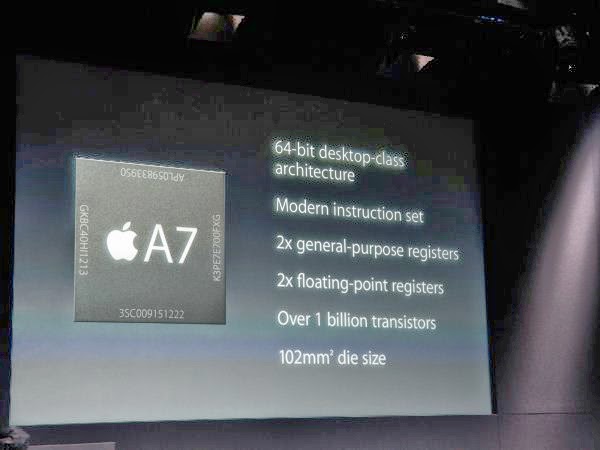AnandTech conducted an in-depth examining of Apple's A7 (ARMv8-based) mobile processor, using a combination of its own analysis and code changes to Apple’s LLVM Compiler project.
Apple’s A7 processor released last year beginning with iPhone 5s, then iPad Air and Retina iPad mini. AnandTech goes into great detail on the A7 and its underlying architecture, describing how Apple made significant improvements over its previous generation A6 processor. They conclude that the A7 chip is a “desktop class” processor as Apple claimed and "the rest of the players in the ultra mobile CPU space didn't aim high enough". In addition AnandTech found that most apps don’t take advantage of the underlying power of the A7 processor, this might be due to the limited of RAM in the current devices and battery consumption.
Cyclone is a bold move by Apple, but not one that is without its challenges. I still find that there are almost no applications on iOS that really take advantage of the CPU power underneath the hood. More than anything Apple needs first party software that really demonstrates what’s possible. The challenge is that at full tilt a pair of Cyclone cores can consume quite a bit of power. So for now, Cyclone’s performance is really used to exploit race to sleep and get the device into a low power state as quickly as possible. The other problem I see is that although Cyclone is incredibly forward looking, it launched in devices with only 1GB of RAM. It’s very likely that you’ll run into memory limits before you hit CPU performance limits if you plan on keeping your device for a long time.Qualcomm chief marketing officer was initially critical of the A7 when it was announced last year calling the 64-bit chip a "marketing gimmick" that offered “zero benefit” to consumers. but Qualcomm later backtracked on that statement. Another Qualcomm employee later admitting that Apple’s A7 hardware “hit them in the gut.”
Read also:


Post a Comment